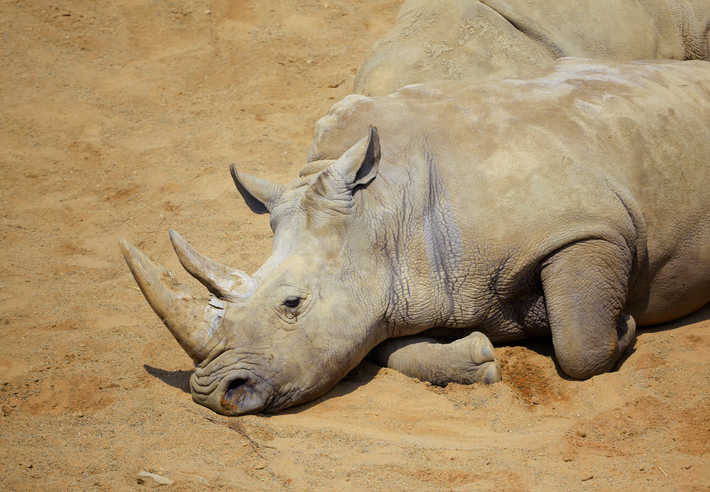This blog is part of a series organised in conjunction with the 19th global development conference.
To achieve global targets on the climate and sustainable development, it is important to learn from conservation practices across a wide range of settings. This column – an entry in GDN’s 2019 international youth blog competition – outlines the role of ‘living laboratories’.
A great deal of research has been conducted by academic institutions and thinktanks related to two of the Sustainable Development Goals (SDGs): SDG 13: Climate Action, and SDG 15: Life on Land.
Some of the current trending research includes a ‘Global Deal for Nature’ and the formation of ‘Restoration Hotspots’, which outline a pathway through which restoration and climate mitigation targets can be achieved in an efficient manner. These research contributions have deep-seated implications for how the global climate narrative is shaped and how nature is governed.
But while the technocratic approach taken by these researchers results in the production of knowledge that is scientific and objective, such an approach may simplify complex socio-ecological systems. These researchers do not carry out implementation, and their work resembles ‘laboratories’, producing knowledge in isolated conditions. But in order to achieve SDG 13 and 15, it is important to test solutions in real-life settings, which tailor in socio-ecological aspects that relate to individual contexts.
Living laboratories: bringing in ‘real-life experiments’ to implement the SDGs
Over the past decade, the concept of the ‘living laboratory’ has become increasingly popular. It takes the form of a ‘geographically’ or ‘institutionally bounded space’ that carries out participatory experimental governance, allowing users and other stakeholders to test and co-create complex solutions in real-life contexts, in order to address areas of concern in climate change and sustainability.
The European Network for Living Laboratories defines these initiatives as ‘user-centered, open innovation ecosystems based on systematic user co-creation approach, integrating research and innovation processes in real life communities and settings.’
Over 114 publications have been produced on the living laboratory. In the context of sustainability, much of the research has been conducted in urban geographies across Europe, and focuses on innovation and development and urban transition. Studies include interventions in building design, creating green infrastructure, and low carbon technologies.
There are a few living laboratories that relate to the interface between SDG 13 and SDG 15. For example, the ‘i-Tree’ project was implemented in Oxford Road, Manchester, by the University of Manchester, Manchester City Council, Corridor Manchester, and Red Rose Forest. As part of the activity, plots were set up consisting of different vegetation types. The effect of these morphologies on urban climate and hydrology were studied.
Some living laboratories factor in human behavior in socio-ecological settings. For example, a project in the North Desert Village in Arizona examined the dynamic between people and their ecological environment at the neighborhood level by creating different types of residential landscapes consisting of various vegetation types and irrigation methods. Preferences of the populace in the region were used to develop an environmental governance regime.
Another example is the Smaland Living Lab at Linnaeus University. This scheme aims to mobilize and synergize context-based approaches on forestry, agriculture, and self-sufficiency in order to generate knowledge on sustainable living in the region.
These living laboratories have a major role to play in achieving the targets of the global climate regime and the SDGs. By involving multiple actors, such as academics, policy-makers, and citizens in governance and implementation, these spaces have the capacity to reshape the prevalent power dynamics present in climate policy.
Hence, knowledge in the sustainability domain is no longer appropriated and owned by certain expert-driven groups. By using experimentation and demonstration to develop and prototype ideas, these created geographies that are data-rich and have the potential to shape evidence-based policy.
Decolonizing the concept of the living laboratory: implications for the Global South
While living laboratories adopt a cutting-edge approach towards governing Life on Land and effecting Climate Action, most of the existing work is rooted in the Global North. With a significant amount of the biodiversity and climate crises taking place in the Global South, it is essential to ‘decolonize’ research on living laboratories. Further, its focus needs to be extended from urban to rural geographies.
Rural landscapes in the Global South are rich in sustainability narratives. For example, one study elaborates how indigenous community lands play a major role in combating deforestation in the Amazon.
Another example notes how controlled fires used by indigenous communities in dry deciduous forests have abated the presence of invasive species in forest. And a further study demonstrates how banning customary indigenous practices has deep-rooted consequences for biodiversity in protected areas.
Moreover, there are some cases in India; where there have been close collaborations between non-governmental organizations, local communities, and universities in area conservation. For example, there is a partnership between the Keystone Foundation, Adivasis in the Nilgiri Biosphere Reserve, and Cornell University in the United States. Outcomes include creation of a new program area in Human-Wildlife Interaction.
Another case study highlights the association between the Applied Ecology Research Foundation in the Northern Western Ghats and the Durrell Institute of Conservation and Ecology at the University of Kent. This has resulted in the implementation of a certification scheme for sustainably harvested forest produce.
But such alliances are not part of the European Network of Living Labs. In order to achieve global climate and sustainability targets in a holistic and sustainable manner, it is important to learn from various conservation practices in these countries. Therefore, it is essential for the current body of research on living laboratories to move beyond Western-centric urban contexts and incorporate knowledge, experiences, and ideologies from the Global South.
Conclusion
Living laboratories have major implications for how SDG 13 and 15 are implemented. They reshape existing power dynamics in climate policy and produce knowledge that can complement existing technocratic research. But they adhere mainly to urban settings in the Global North. With the milieu of sustainable land-based governance approaches in the Global South, it is essential that such geographies are also recognized as living laboratories.






